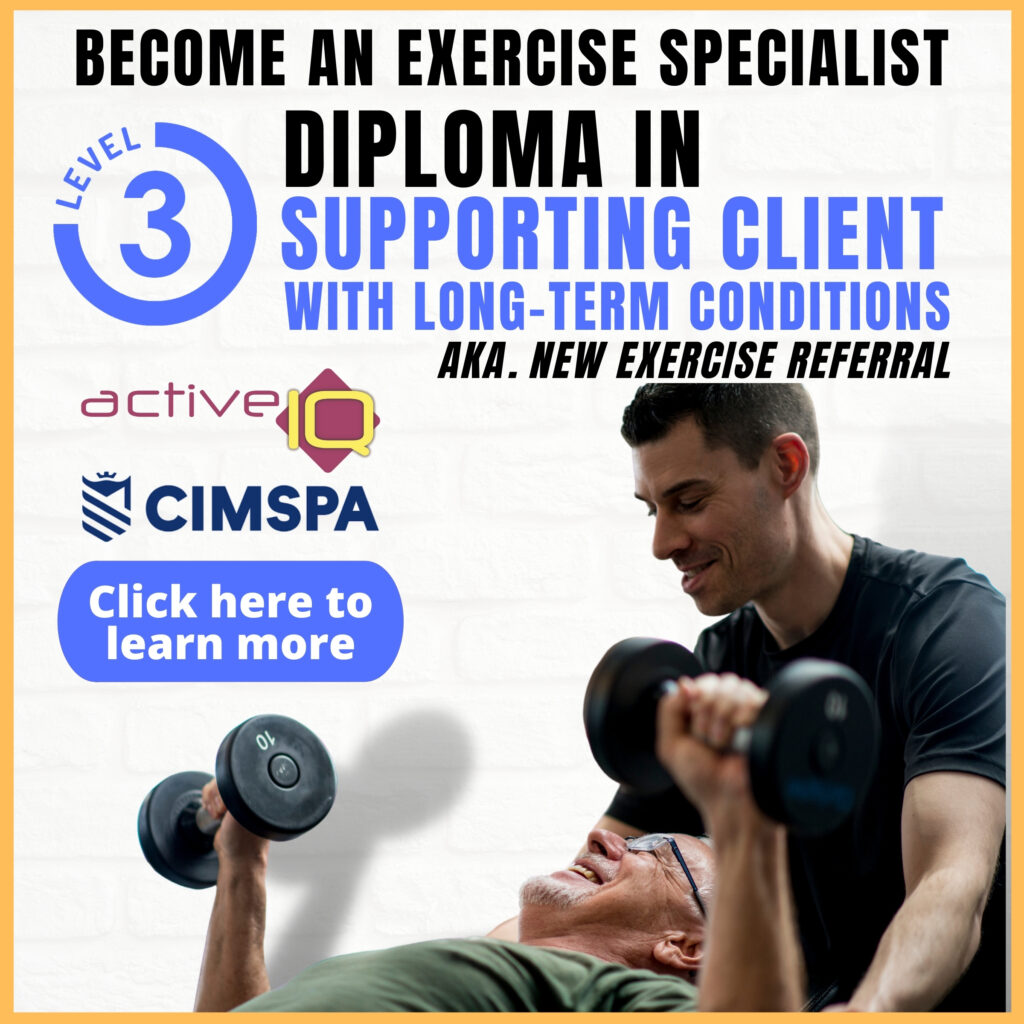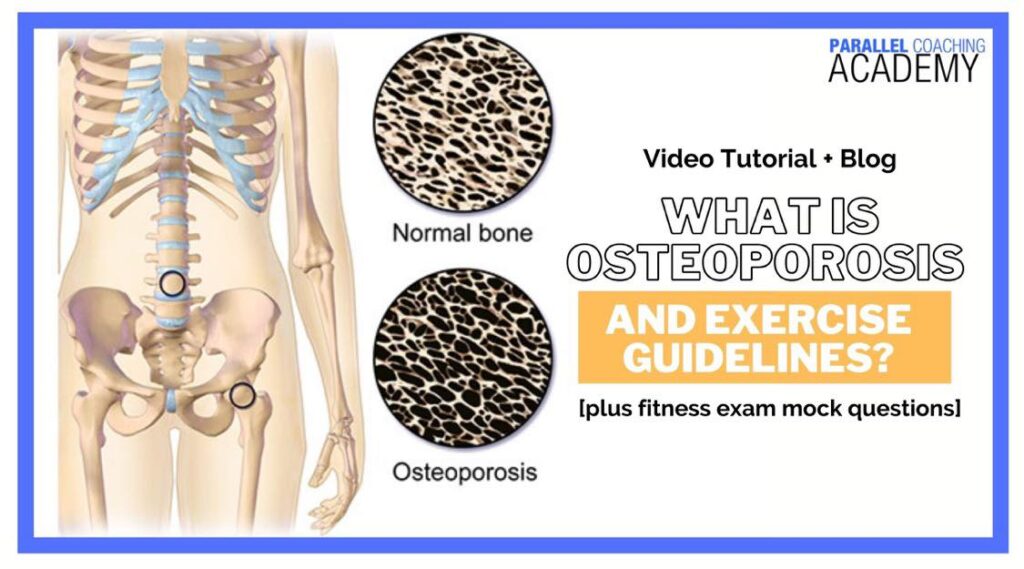As a Level 2 or Level 3 FITPRO, you need to understand what is osteoporosis and what exercise guidelines to follow when working with these clients.
Today’s blog will explore the effects of aging, what is osteoporosis, who can train a client with Osteoporosis, and exercise guidelines.
At the bottom of this blog, you’ll also find three mock questions to test your knowledge
Watch the 10 minute video about Osteoporosis:
The effects of aging
There are many physiological changes that occur naturally as we age, here are just a few that affect our musculoskeletal system:
- A reduction in the number and size of muscle fibres – sarcopenia
- Increased stiffness in tendons as a result of reduced water content
- Reduced joint motion and flexibility
- Impaired cushioning through load-bearing joints, with more wear and tear on the cartilage.
- More likelihood of other long term health conditions
- and Reduced bone density and increased osteopenia and osteoporosis
Let’s focus more on the latter of these…
What is Osteoporosis?
Osteoporosis is defined as a reduced density of bone mass, that makes the skeletal system more fragile and prone to fractures.
The most common fracture sites for osteoporotic clients are the Hip, Spine, and Wrist. This is because of the impact experienced on these areas during falls, or as a result of load bearing.
Bone is made up of collagen and calcium. A healthy bone will have small honeycomb-like “holes” which makes it solid and resistant to fractures. This structure resembles a “crunchie-chocolate bar”, firm solid, and snaps in half cleanly.
An osteoporotic bone has much wider “holes” and gaps between the collagen fibres. This makes it more like an “Aero-chocolate bar”, meaning that it is less resistant to pressure and crumbles easily.
Who can train a client with osteoporosis?
Osteoporosis is a long-term condition so only FITPROs that are qualified to work with long-term health conditions can work with osteoporotic clients. The qualification required is either the old Level 3 Exercise Referral or the New Level 3 Diploma in Supporting Clients With Long Term Conditions.
Osteoporosis Exercise Guidelines
Even when fully qualified there are specific exercise guidelines that need to be adhered to when working with these clients. These osteoporosis exercise guidelines manage the safety of the client and mitigate the risk of a fracture occurring during the exercise session.
- Encourage health-related guidelines of 150 mins of moderate activity
- Include whole-0body resistance training at least twice per week
- Encourage weight-bearing activities (ie walking rather than swimming)
- Focus on fall prevention, by activating the core and glutes. Improve overall Agility, Balance, and Coordination.
- Increase mobility of major joints in the body to aid normal daily function
- Avoid excessive spinal flexion and extension
- Avoid sudden changes of direction and complex routines
- Do not include high-impact exercises, especially for those in advanced stages of osteoporosis.
- Ensure all balance exercises are logically progressed and safe to perform so as to avoid un-necessary falls.
- Make sure the environment is safe and any potential hazards that may cause a slip, trip, or fall are identified and rectified.
Test your knowledge with more mock questions:
[NOTE: The answers are below the 3rd questions]
Q1: What is the name given to reduced bone mass density?
A. Sarcomere
B. Sarcopenia
C. Osteomere
D. Osteoporosis
Q2: What physiological changes occur as a result of aging?
A. Improved coordination
B. Increased bone density
C. Reduced joint motion
D. Increased flexibility of tendons
Q3: What are the three bones most likely to fracture in an osteoporotic client?
A. Hip, Clavicle and Femur
B. Spine, Clavicle and Femur
C. Spine, Hip and Femur
D. Spine, Hip and Wrist
Answers to the mock questions are :
Question 1= D, Question 2 = C, Question 3 = D
If you want more mock questions like this, then you can download more Free Mock Questions: DOWNLOAD NOW
Want to become a specialist and train clients with Long Term Conditions?
Become a specialist in offering health-related activity advice and supporting clients that fail a PAR-Q or have Long Term Conditions.
This is your opportunity to set yourself apart from other FITPROs, expand your knowledge, confidence, and link up with healthcare professionals.

Dedicated to More
Hayley “What is Osteoporosis?” Bergman
Parallel Coaching
P.S. You can also find us on the following platforms:
Instagram: Follow Now
Facebook: Like Our Page
Twitter: Tweet Us
YouTube: Subscribe Here
More Long Term Conditions Blogs: HERE

